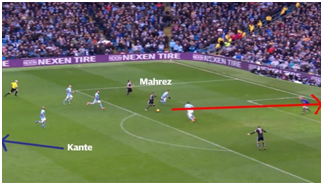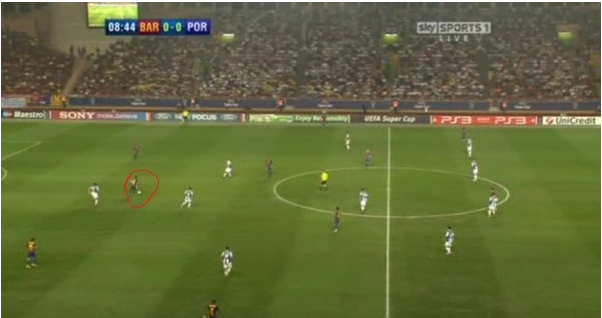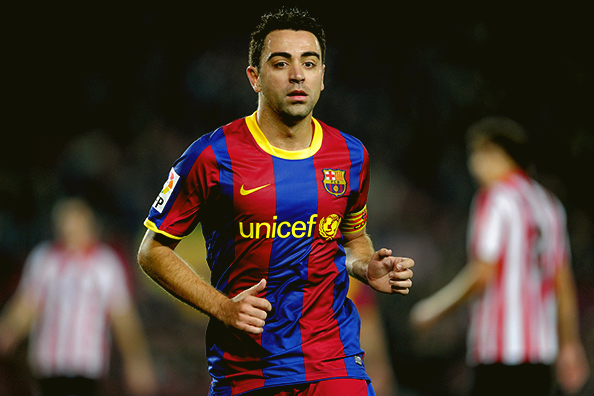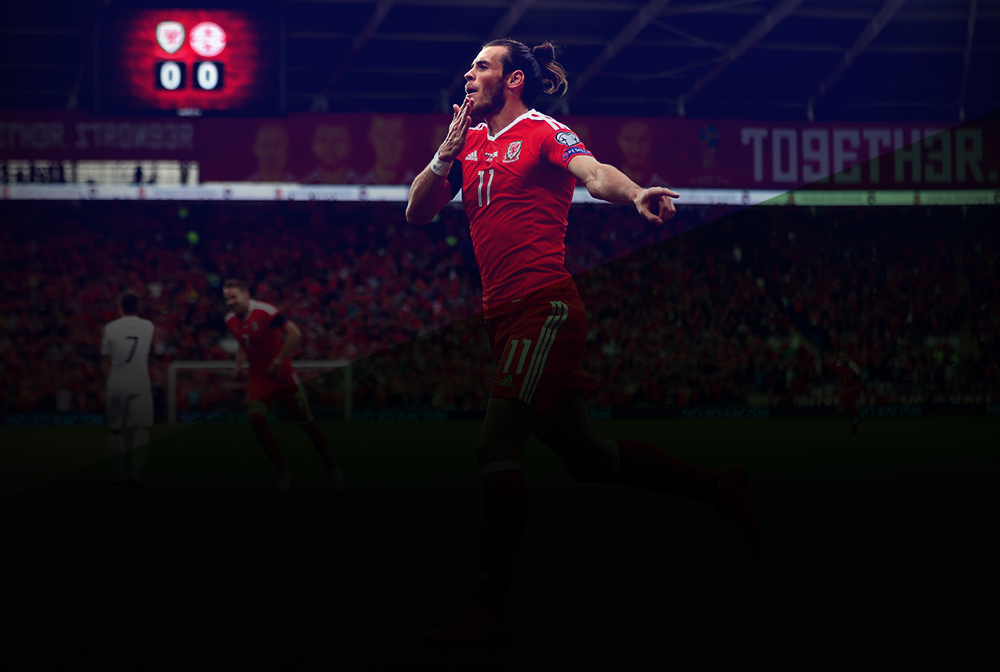Hiko Seijuro writes a detailed article about the types and importance of a ‘Number 6’ in a team.
Football goes in cycles, the past is the key to the future and old systems and styles may become popular in the future. A good example of this is the 3-5-2 formation originally used in 1986 by the world cup winning Argentine team. The formation went out of vogue but has been resurrected by Antonio Conte in Juventus and in the Italian national team and is actually becoming popular as even Bayern and most recently Everton have used the formation.

Taking this to be the focus of this article, the role of the number 6 i.e. the defensive or holding midfielder has changed over the years; this piece examines the different types of defensive midfielders and how teams have valued them at different points in time.
In general, there are three (3) types of defensive midfielders and they are classified according to their abilities and the roles they play for their teams. The three kinds of defensive midfielders are: Destroyers, Regista’s, and Pivots.
The Destroyer (The Beast):
This is probably the most popular or common type of defensive midfielder especially in the English Premier League. Also, because of the popularity of the EPL, fans especially in Nigeria have usually equated the number 6 role with the destroyer. This is probably due to the most famous destroyer of them all: Claude Makelele, so much that the English media renamed the role “the Makelele role”.
Real Madrid offloaded Makelele because he was not a “galactico”, with Florentino Perez taking exception to his demand for wages on par with his more illustrious teammates; when he left, Zidane famously said: “why add another layer of gold paint to the Bentley when the engine has been removed?” His modern reincarnation seems to be Ngolo Kante who was pivotal in Leicester’s title winning season and he has also settled well at Chelsea.
Principally, the job of the destroyer is to defend. Such players have almost no offensive duties whatsoever whether during build up or during the attack organization phase. They are simply required to sit in front of the back four and break up opposition attacks by constantly harassing opposition attacking midfielders. They also help in protecting against counter attacks when the full backs bomb forward to try and add width to the attack.
Being a destroyer, Kante’s statistics in Leicester’s title winning season bear out this fact. The Frenchman finished the season with both the highest number of tackles and interceptions across the top five leagues in Europe. At the other end of the pitch however, his statistics were less than inspiring: he managed just one goal (from a goal keeping error by Watford keeper Gomes) and two assists; both for Riyad Mahrez.
Here is a scene from their 3:1 win over Manchester City last season:

Fernandinho goes to tackle him and does so unsuccessfully, Zabaleta is out of position and suddenly Kante has moved into space and has three teammates ahead of him.

The next part clearly shows a destroyer’s mindset. Where some players might want to pass, then run ahead to support the attack, and maybe score, Kante’s focus is always on the defensive side of the game. Safety first.
He passes to Mahrez the moment he finds himself too far ahead of the half way line and retreats.


Mahrez goes on to score a beautiful goal but by the time he does that, Kante (not visible) has moved back into position on the half way line.
The Regista (Beauty):
The name “regista” is actually an Italian word, it means: “deep lying playmaker”, in Argentina, such players are called “Volante’s” which means “steering wheel” as they tend to control the speed and direction of their teams attack. The regista is a kind of defensive midfielder whose duties in that role are totally counter intuitive to the general conception of what a number 6 should be doing in a team.
A regista’s primary duty is offensive in nature and he is expected to start attacks from deep, either with short line breaking passes or with long balls, depending on the style of the team he plays for.
The greatest exponents of this role are Andrea Pirlo and Xavi Hernandez. Both of them are not known for their tackling abilities, a quality you would expect from a defensive midfielder and as such are not called upon for defensive duties; however, their role in the team closely resembles that of an air base or military base from which fighter jets leave to conduct air raids on enemy positions. Such players are usually extremely technically gifted and excellent passers of the ball.
In Pirlo’s case, because AC Milan and Juventus usually occupy a slightly deeper overall position on the pitch, Pirlo is tasked with spraying passes to find runners in behind the opposition defense. In Juve’s formation, he was usually seen at the base of the midfield diamond employed by Allegri, the work he does there, differs markedly from that of Kante at Leicester City.
In Xavi’s case, teams generally dropped off Barcelona while defending in a low block so there was usually no space to play long balls over the top into; Xavi would rather help in patient build up and when the opportunity presents itself, play ground defense splitting passes into teammates feet, this enabled Barcelona to bypass the oppositions midfield and get at the defense immediately. What marks him out as a regista however, his starting position, he was usually seen alongside Busquets or sometimes even occupying a deeper position to aid ball circulation.

Xavi (in the red circle) dropping deep to aid ball circulation
As earlier stated, regista’s are not in the team because of their defensive capabilities as they usually lack any, so in order to offset any disadvantages that may arise in defensive situations, coaches will usually play a destroyer or an extremely combative central midfielder alongside the regista.
At AC Milan, Ancelotti played Gattuso alongside Pirlo to protect him from being exposed defensively while at Barca, Guardiola played Busquets as an insurance policy.
Teams that play registas have had a high level of success in the past decade, AC Milan became European Champions playing Pirlo in that position, and who can forget Guardiola’s all conquering Barcelona with Xavi as their regista. More recently, Juve went to their first Champions league final in over 16 years with Pirlo (again) playing as the regista.
Registas generally have greater attacking input than other types of defensive midfielders as evidenced by the fact that Xavi currently holds the record for the most assists in a La Liga season with 20 assists.
Having looked at the first two types of number 6, you may wondering why a team that cant have a player that gives them the best of both worlds. There is such a number 6 and he is called a Pivot.
The Pivot:
This is the third kind of defensive midfielder and is basically a hybrid of sorts, combining the qualities of the other two. The pivot is a defensive midfielder whose duty is both to break up play and to instigate attacks from deep. He must be an excellent tackler, adept at reading the game in order to make interceptions and be technically proficient in order to play accurate passes and act as the conduit between the defense and the attacking players. The personification of this role is Sergio Busquets.
Busquets is the perfect exponent of the pivot role, an excellent tackler and an accurate passer of the ball. Unlike the regista, the pivot is important to his teams’ attack in a less obvious way. He is particularly useful in two phases: first phase build up and transition; he also acts as a kind of reset button that teammates can rely on when attacks start to break down.

Last season, Busquets made the second highest number of tackles in the Barcelona team, behind only Dani Alves underlining his defensive importance; on the other hand, he had the highest number of successful long balls in La Liga, he averaged 4.5 long balls per game (Pirlo-esque), he also had the second highest number of passes completed in La Liga behind only Real Madrid’s Toni Kroos.
To be a successful pivot, one needs to combine the abilities of both the destroyer and the regista; this means that he will be neither one nor the other, instead he’ll be a little bit of both.
Johan Cryuff was the apostle of Pivots, as he played Guardiola in his dream team of the 1990’s, however, the pivot had gone out of vogue in the early and mid 2000’s with the rise of the 4-4-2 formation and the obsession with destroyers. This quote by Guardiola in 2004 perfectly sums up footballing attitudes during that time:
“20 years ago, several teams had players like me; I haven’t changed, my skills haven’t declined but the pace of the game has become faster and teams want players who can tackle, ball winners like Viera or Davids (Juventus DM) if you can pass the ball perfectly, well good; that’s a bonus……..players like me have become extinct” – Guardiola
It took Guardiola himself to become a coach and conquer the world with Busquets playing as a pivot to force the collective consciousness of the footballing world back to pivots.
Pivots are relatively few with most teams preferring destroyers, however, teams that play with pivots have generally dominated possession and been fairly successful in recent years; examples include PSG with Thiago Motta, Bayern with Alonso and Carrick at Manchester United though he has been used decreasingly by Mourinho.
Concurrently, the aforementioned teams are the possession kings of Europe with Man.Utd averaging 57.2 % possession stats in the EPL last season to top possession stats in the EPL while Bayern, Barcelona, and PSG make up the top three possession teams across Europe. (The above stats are for the 2015/2016 season).
The role of the number six has changed throughout footballing history but the constant factor has been the importance of this role to every team. Different players interpret this role differently based on their abilities and the needs of their team. However, if any team desires success, then the number six position cannot be overlooked. Spain won the Euro’s without a recognized striker, Barcelona won the champions league playing a midfielder at centre back but no team has ever won anything without a good number 6.
adores Pep Guardiola. His favourite players are Messi and Sergio Busquets
- Tactical Analysis: Benfica 0-1 Manchester United | Goalkeeping Mistake Decides Close Encounter - October 23, 2017
- Tactical Philosophy: Paul Clement - October 17, 2017
- Tactical Theory: The Strategic Importance Of Press-Resistant Players - September 8, 2017























































